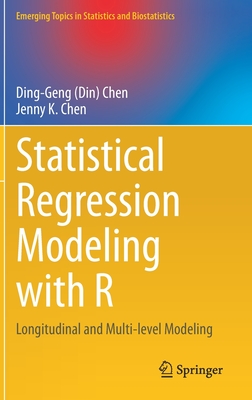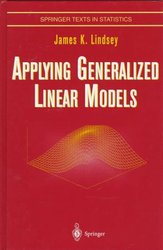商品描述
Learn How to Use Growth Curve Analysis with Your Time Course Data
An increasingly prominent statistical tool in the behavioral sciences, multilevel regression offers a statistical framework for analyzing longitudinal or time course data. It also provides a way to quantify and analyze individual differences, such as developmental and neuropsychological, in the context of a model of the overall group effects. To harness the practical aspects of this useful tool, behavioral science researchers need a concise, accessible resource that explains how to implement these analysis methods.
Growth Curve Analysis and Visualization Using R provides a practical, easy-to-understand guide to carrying out multilevel regression/growth curve analysis (GCA) of time course or longitudinal data in the behavioral sciences, particularly cognitive science, cognitive neuroscience, and psychology. With a minimum of statistical theory and technical jargon, the author focuses on the concrete issue of applying GCA to behavioral science data and individual differences.
The book begins with discussing problems encountered when analyzing time course data, how to visualize time course data using the ggplot2 package, and how to format data for GCA and plotting. It then presents a conceptual overview of GCA and the core analysis syntax using the lme4 package and demonstrates how to plot model fits. The book describes how to deal with change over time that is not linear, how to structure random effects, how GCA and regression use categorical predictors, and how to conduct multiple simultaneous comparisons among different levels of a factor. It also compares the advantages and disadvantages of approaches to implementing logistic and quasi-logistic GCA and discusses how to use GCA to analyze individual differences as both fixed and random effects. The final chapter presents the code for all of the key examples along with samples demonstrating how to report GCA results.
Throughout the book, R code illustrates how to implement the analyses and generate the graphs. Each chapter ends with exercises to test your understanding. The example datasets, code for solutions to the exercises, and supplemental code and examples are available on the author’s website.
商品描述(中文翻譯)
學習如何使用成長曲線分析與您的時間序列數據
在行為科學中,越來越突出的統計工具——多層次回歸,提供了一個分析縱向或時間序列數據的統計框架。它還提供了一種量化和分析個體差異的方法,例如發展和神經心理學,並將其置於整體群體效應模型的背景下。為了利用這個有用工具的實際應用,行為科學研究者需要一個簡明易懂的資源,來解釋如何實施這些分析方法。
《使用 R 進行成長曲線分析和可視化》提供了一個實用且易於理解的指南,幫助在行為科學中,特別是認知科學、認知神經科學和心理學,進行多層次回歸/成長曲線分析(GCA)時間序列或縱向數據。作者以最少的統計理論和技術術語,專注於將 GCA 應用於行為科學數據和個體差異的具體問題。
本書首先討論分析時間序列數據時遇到的問題,如何使用 ggplot2 套件可視化時間序列數據,以及如何格式化數據以進行 GCA 和繪圖。接著,書中提供了 GCA 的概念概述及使用 lme4 套件的核心分析語法,並演示如何繪製模型擬合圖。書中描述了如何處理非線性的時間變化,如何結構隨機效應,GCA 和回歸如何使用類別預測變數,以及如何在不同因素的水平之間進行多重同時比較。它還比較了實施邏輯和準邏輯 GCA 方法的優缺點,並討論如何使用 GCA 來分析作為固定和隨機效應的個體差異。最後一章提供了所有關鍵示例的代碼,以及示範如何報告 GCA 結果的範例。
在整本書中,R 代碼展示了如何實施分析和生成圖形。每章結尾都有練習題以測試您的理解。示例數據集、練習題解答的代碼以及補充代碼和示例可在作者的網站上獲得。











